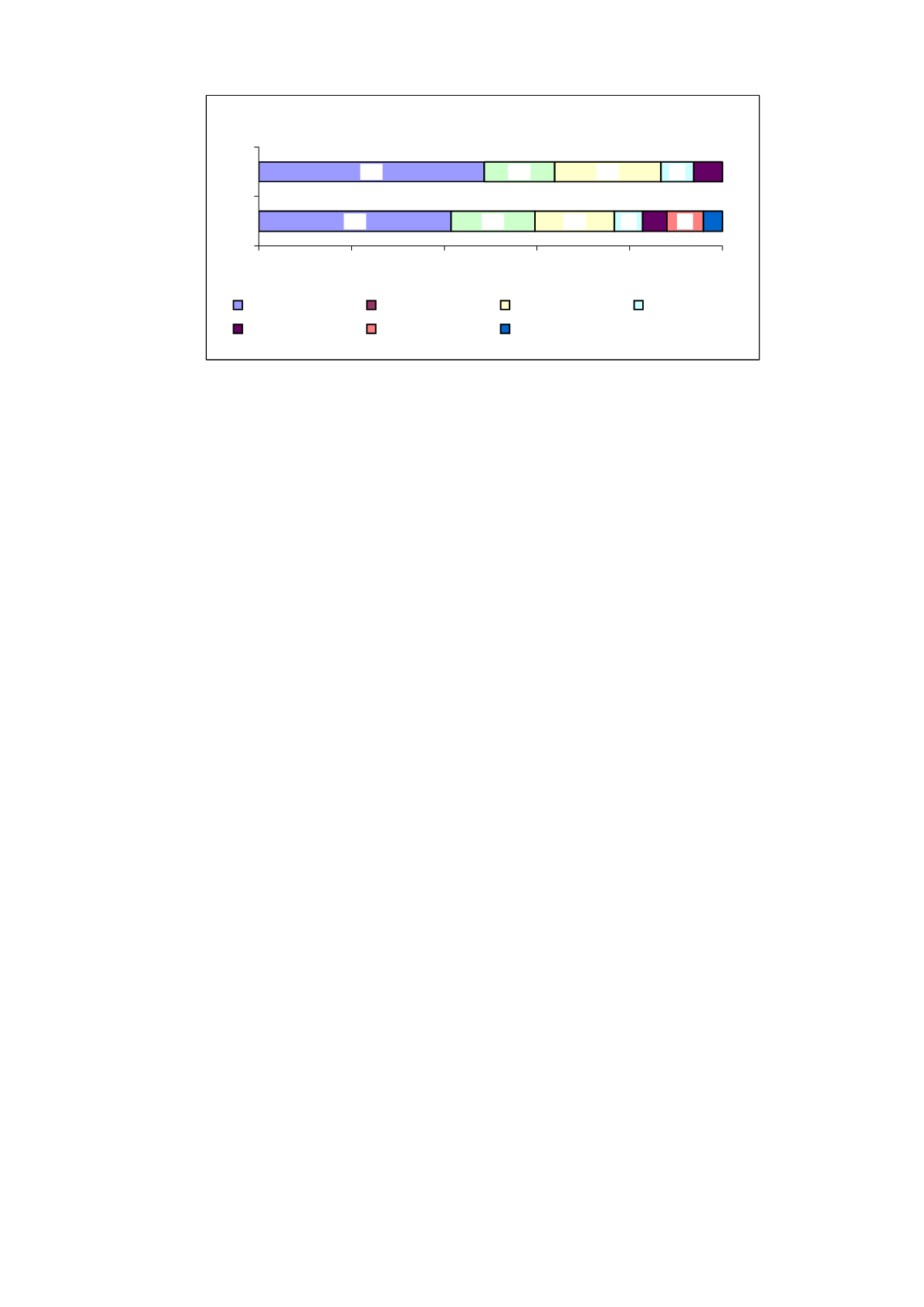

Figure 3.
Income structure of herding household, by years
41.5
48.6
18.1
15.2
17.1
22.9
6.1
7.1
5.2
6.2
7.9
4.1
0%
20%
40%
60%
80%
100%
2003
2001
meat
wool & cashemere milk & dairy
skin
others /pension/
handicrafts
vegetables
Source: Dr. Ts.Tserenbaljir, project researcher, Report of the research on “community
herders income and expenditure survey”, 2004
In the herding households, women play main roles in additional income generation. The
following interventions are taken from the project in order to create additional income
sources for the communities:
¾
Making handicrafts with animal skin and sheep wool: Community representatives
attended in the felt-making training course in the city and received wool-processing
equipment from the project. Community women make clothes and other handicrafts
with felt for their use or selling. As the result of this activity herding households
income increased and also women started to have their “own” money, which gives them
one of the possibilities to establish their own fund to support women’s participation in
NRM.
¾
Growing vegetables: Communities in 3 study sites are growing potatoes and other
vegetables, which becomes one alternative income source for the households.
¾
Small funds to support women’s income generation activities: This year project funded
women’s small-scale income generation project.
¾
Herders who live in Khangai mountain forest-steppe ecosystem used to collect and use
natural plants such as fruits and some medicinal herbs for only their household
consumption. But now they have collected it for selling without their consumption.
The project pays more attention to supporting women’s co-management activities which
relative to increas in household income. Some of the women are attended felt-making
training in Darkhan city in 2001 according to support of the project for improving capacity
of the women.
This year project financed small-scale projects proposed by the women groups of the
communities. The small projects proposed by the women concern mainly on livelihood
issues, increasing additional income by making felt and handicrafts, growing vegetables,
and increasing community fund, or natural management issues like protecting forest,
reseeding pasture, and so on.
Market-oriented (cash-income)
Before implementing co-management, herding households used animal products originally
for their consumption. Currently, they have had a interest to sell the animal products.
Especially, women have more interest to sell animal and other products such as milk/dairy
and hadicrafts which are made by themselves. Because their work have started to give
benefits (income) them. In other words, their unpaid work still give them benefits and
people have paid them for their products.
78









